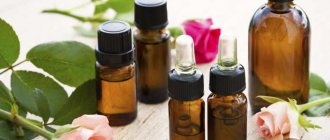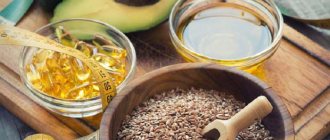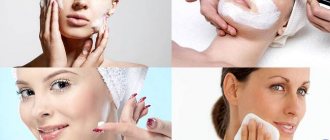Several centuries ago, coconut oil occupied one of the central positions in cosmetology. In Asia, coconut oil has been used as a base product in most face and body care products. The peculiarity of this raw material is that it is suitable for all skin types, effectively solving a wide range of care tasks from gentle moisturizing and nutrition to sun protection and combating aging at a deep level.
Composition of coconut oil
Coconut oil is distinguished by the presence of fatty acids in its composition. They are a form of saturated fat. Mid-renal acids occupy about 65% of the product composition. And this is its main advantage.
Table 1. What acids and other useful components are contained in the oil
| Type of acid (ingredient) | a brief description of | Percentage of total composition |
| Lauric | Is an organic antiseptic. Has a beneficial effect on the skin, providing an antibacterial effect. Capable of destroying pathogenic bacteria, eliminating redness and irritation. Lauric acid activates the restoration of skin functions and promotes wound healing. Often used to eliminate acne or boils | About 50%. The exact quantity depends on how the product is manufactured. |
| Palmitic | Stimulates the process of cell renewal, whitens the epidermis, increases its elasticity. | 9-10% |
| Myristic | Promotes deeper penetration of beneficial substances into the structure of the dermis, strengthens immunity at the local level. | 20% |
| Oleic | Helps retain moisture and strengthen skin barrier functions. Oleic acid neutralizes the harmful effects of free radicals. /td> | 6% |
| Caprylic | Helps restore water-alkaline balance, improves the absorption of necessary oxygen. Stimulates regeneration processes, regulates the activity of the sebaceous gland. | 5-6% |
| Stearic | Has excellent protective functions. Protects the skin from negative external influences. | 5% |
| Linoleic | Improves regeneration, reduces the risk of allergies. | 3% |
| Vitamins A, B, C, E | Participate in starting the process of rejuvenation of the dermis, promote active collagen production, and protect the skin. | 2-3% |
| Phosphorus, calcium, iron | They rejuvenate, heal, fight inflammation, smooth out wrinkles. | 2-3% |
On a note! The coconut product also contains important components such as tocopherol and retinol. The first is a powerful antioxidant. And the second has a noticeable regenerating effect.
Due to the content of a large number of useful components, coconut oil is deservedly included in the list of frequently used anti-aging agents. And also regenerative and preventive. This product is applied to the skin of the face, body, and hair. Use as a mask, cream, lotion.
Indications
In fact, everyone can benefit from using coconut oil. Even if you don't have any skin or hair problems. But to understand who really needs to use it in their cosmetic routine , you can study the list below. Use of coconut oil:
- for sagging and dry skin;
- at the first signs of aging;
- with aging skin;
- with disturbed water balance;
- for inflammation;
- for irritations;
- when dehydrated;
- in the presence of acne, pimples;
- with scars;
- with pigmentation;
- with yellowness of the skin;
- in the presence of wrinkles and microcracks;
- with pale skin;
- for bruises under the eyes.
Product production methods
Many people confuse coconut oil with milk, which is the liquid found inside the fruit. But that's not true. The product in question is obtained by processing chips using hot processing or cold pressing.
Hot processing is a rather labor-intensive process. First, the original fruit is pressed and then boiling water is poured over it. The result is coconut milk, from which the oil is extracted. Then it is filtered, purified from impurities and packaged.
This manufacturing method is good because in the end the oil can be extracted in maximum quantities. That is, almost all the contents of the coconut end up on the shelves or in the cosmetic production workshop.
The disadvantages of this method are the loss of some beneficial substances. Which is justified by exposure to high temperature. For budget funds and making homemade formulations, hot-processed coconut oil is quite suitable. But professional, expensive brands prefer to add cold-pressed coconut oil to their products.
Cold production allows you to extract only 10% of the useful product. During production, raw materials are not heated above 40 degrees, which ensures the preservation of valuable acids and other substances in full. The cold-pressed product is quite expensive, and you can rarely find it in stores.
On a note!
Did you know that coconut milk is close in composition to human blood plasma? History knows of cases when it was used as a saline solution. Coconut oil is also well accepted by the body, almost never causing allergic reactions.
Types of oils
There are 3 main ones: refined, unrefined, liquid. The latter is most often produced for food purposes. And cosmetic products are produced in the form of refined or unrefined solid products. Depending on the manufacturer and the quality of processing, the finished products differ markedly. Lower quality oils can be quite harsh. And also deprived of most of the nutrients due to rough processing.
Unrefined product - most suitable for skin care. It is made from the edible part of the pulp without the addition of chemical preservatives and other harmful substances. In 2011, the quality of different types of oils was even analyzed. The process took into account the way the products were produced. The conclusions obtained after the study were as follows: the unrefined product contains a larger amount of useful compounds and acids.
On a note! Cosmetics are most often produced in solid form. To obtain a liquid consistency, the product should be heated.
https://youtu.be/https://youtu.be/4sW778_Bwvo
_
Composition of the miracle remedy
Coconut oil can give the skin irreplaceable and unique care, and at the same time it is effective against wrinkles. The thing is that the benefits of coconut are due to the presence of a rich, unique composition of the product.
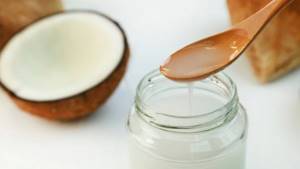
Let's consider the main components of the herbal remedy:
- Folic acid - eliminates skin blemishes, inflammation, acne.
- Pantothenic acid - can smooth out facial wrinkles.
- Stearic acid - brightens the dermis, reduces age spots and freckles.
- Oleic acid - perfectly nourishes and restores mature skin.
- Vitamins B1 and B6 - exhibit regenerating and anti-inflammatory properties, heal and protect.
You may be interested in reading this article: Clay against blackheads: application features and effective masks
Video: beneficial properties of a natural remedy.
Benefits and harms of coconut oil, main properties
Coconut oil is ideal for dry and normal skin. Those with oily skin should be careful when using this product. Don't forget that it is a fat extracted from coconuts.
Yes, the product in question has moisturizing, nourishing, and protective properties. It also soothes the skin by normalizing the skin's production of sebum. But at the same time, oil can make oily skin even more vulnerable to its own main problem. Before use, you should consult a cosmetologist.
Speaking about the benefits of the product, we note the following useful properties:
- Treatment of inflammation. The acids contained in it have anti-inflammatory properties. They can help get rid of acne and, unlike a number of pharmaceutical products, without drying out the epidermis.
- Slowing down aging and rejuvenation. The complex action of active ingredients is aimed at regenerating the skin, giving it elasticity and firmness. As a result of application, it is possible to achieve an amazing effect: tightening the oval of the face, refreshing the color and general condition of the dermis.
- Mitigation. This property is especially important when caring for flaky and rough skin.
- Protection. The product is able to protect the epidermis from the harmful effects of UV radiation and photoaging. This product is an ingredient in sunscreens and lotions. It is also acceptable to use it in its pure form. But it is worth remembering that an SPF value of 6-8 is not enough for full protection.
- Hydration. The product creates a special barrier that helps maintain the required skin moisture.
- Collagen production. This property is directly related to the launch of rejuvenation processes. Lauric acid in action is the starting point in activating the production of collagen, often called the “elixir of youth.”
- Lightening. Some cosmetologists claim that coconut oil can lighten dark spots on the skin.
- Strengthening the immune system. The product significantly improves the overall condition of the skin, making it resistant to various problems.
- Air exchange: the product stimulates cellular respiration, which has a beneficial effect on the general condition of the dermis.
On a note! It is not for nothing that residents of countries where coconut palms grow call them trees of life. And scientific research deservedly allows us to call them a tree of beauty.
You should not count on fantastic results of skin rejuvenation and tightening. After all, the product can only slightly improve the condition of the dermis, and not in some magical way completely renew it.
Is coconut oil harmful? Like almost any cosmetic product, coconut oil also has its drawbacks. There are people who have an individual intolerance to the components of the product, so they need to do a test before use. To do this, apply a little product to the skin. After some time, you need to check for a reaction. If redness or peeling does not appear, then there is definitely no allergy.
Speaking of harm, we should mention problematic and oily skin. After all, the beneficial effect of the product on it has not been proven. It is not recommended to apply the product before bed to oily skin, as too long exposure will increase oiliness.
The oil can clog pores as it is comedogenic. Although some people strongly disagree with this. They believe that the product is 100% likely to get rid of acne and other problems.
Possible harm
Before using coconut oil on your face, you need to make sure that you are not allergic to the product. To do this, it is tested on a sensitive area of the arm or neck. The product does not have any other negative properties.
The effectiveness of this pleasant aromatic product has been proven by the experience of our predecessors and modern scientific research, so if you want to create homemade cosmetics yourself, you can safely order a jar of this effective product.
Did you like the article? Like ♥, subscribe to our channel and you will be one of the first to know about new publications!
And if you have something to share, leave your comments! Your feedback is very important to us!
Product selection criteria
It is worth purchasing the product in trusted departments and stores of organic cosmetics or in pharmacies. Don't rush to buy the first oil you come across. Since it comes in different types, consider your skin type and also read the instructions. It would be a good idea to test the probe. It will say a lot about the finished product.
- for dry and normal dermis, an unrefined cold-pressed product (analogous to virgin coconut oil) is ideal;
- Examine the packaging and, if available, open the sample. The oil should have a subtle coconut aroma (not strong);
- the color of the product in liquid form should be light yellow (transparent), and in solid form – milky white;
- the dark shade of the product indicates the probable presence of chemicals in it;
- for problematic or oily dermis, you should choose a refined product. It has no smell.
Customer Reviews
Maria : For more than 15 years I have been suffering from constant acne on my face, and all pharmaceutical remedies have not given much results. I tried coconut oil in its pure form. I just applied it to the inflamed areas 2 times a week. The skin has become significantly cleaner, brighter and smoother.
Anna : I have very dry and thin skin, constant peeling and spots. A friend advised me to try masks based on coconut oil. I did it once a week, before bed, for 12 days. I no longer remember the peeling and feeling of tightness. The ideal remedy.
How to use coconut oil for facial care
The simplest and most affordable way to use the product is to add it to your cream. It can be used not only on the face. The oil is also suitable for the skin around the eyes. Mixing proportions: a teaspoon of the main component per 100 ml of product. The finished mixture must be placed in a sterilized container. The shelf life of such a product does not exceed one month, so you should not mix large amounts of cream with oil.
An alternative option is to mix a single dose of cream with a few drops of oil. It is important here not to overdo it with the amount of the latter.
Tips for using the product for facial skin care:
- it should be applied only to previously cleansed dermis;
- for the face you should use a refined product;
- due to the fact that oil can clog pores, those with oily or problematic skin should periodically use a scrub;
- The product should be stored in the refrigerator;
- Before use, it is recommended to warm the product in your hands or place it in a water bath.
Note! In professional skin care products, manufacturers often add coconut oil at the product manufacturing stage. Well-known products are: virgin coconut oil, vita coco, premium oil - cold-pressed coconut oil and others. They are not cheap, but their performance justifies the price.
An example of a high-quality professional product is dry coconut oil with a tanning effect. It is produced by the famous natural cosmetics brand James Read. This product is unique. It is able to simultaneously moisturize, nourish, restore and visually transform the skin. The product gives the surface of the dermis a light bronze tint that lasts for five days.
The oil has a non-greasy, soft texture. It is easy to apply and quickly absorbed, and the effect is achieved just a few hours after application.
Indications and main contraindications
It has already been said that, despite a number of beneficial properties, coconut oil should be used with caution. There are direct indications for its use and factors that should make you think before you begin active use.
Direct indications include:
- peeling and dryness of the epidermis,
- sagging eyelids,
- "crow's feet"
- small wrinkles,
- uneven complexion,
- pronounced signs of photoaging,
- pigmentation, freckles.
There are few contraindications: personal intolerance, a large number of acne and pimples, wet eczema and similar skin diseases, ulcers.
Tips from cosmetologists
The use of such a useful tool cannot be done without the advice of real experts. Below you will find tips and tricks, as well as interesting facts about coconut oil from cosmetologists. Use coconut oil as a base for your homemade scrub .
All purchased scrubs contain one of the oils. You just need to prepare the product that you usually use to scrub your face (coffee grounds, coffee abrasive, oatmeal, cane sugar, soda) and add 1-2 tablespoons of coconut oil until you get the desired consistency.

Note! You can add coconut oil to any of your store-bought creams. But it is best to do this on your hand, immediately before application. Just add a little cream to your hand, add a couple of drops of oil there and mix. Then apply to skin.
Despite the fact that coconut oil helps a lot even after the first time, you definitely shouldn’t stop using this component in your skincare routine. With regular use you will get an even more noticeable effect - your hair, your face and skin will glow, be smooth and soft. And it’s a big plus that this oil can be used on the whole body and even in food.
If you're going on vacation to bask in the hot sun, take coconut oil with you. This amazing product will help make your tan more even and beautiful , just apply it instead of tanning cream and after a few days you will notice how evenly the tan is applied to your skin.
Moreover, coconut oil perfectly protects the skin from ultraviolet rays, and you are unlikely to get sunburned (of course, if you do not lie under the scorching sun from 11 to 4 in the afternoon). You can also apply coconut oil to your hair if you don't like it to fade under the sun.
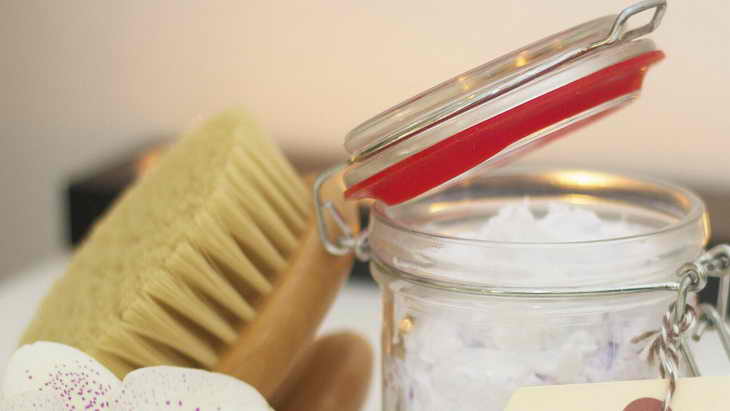
Even though coconut oil can be eaten, it is still worth remembering that it is an oil, and it is fatty . And we are not talking here about precautions for losing weight. Such fatty foods in large quantities have a very bad effect on health and can lead to diseases. Therefore, use coconut oil strictly as an oil.
Homemade coconut oil skincare recipes
If you can’t afford such products or you just decide to experiment, then the scope for imagination is extensive.
Table 2. Recipes for homemade facial skin care formulations.
| Type of product | Main Ingredients (other than coconut oil) | Preparation | Result of application |
| Universal mask | Honey, kefir (or cream) | A tablespoon of kefir (cream) is mixed with honey and the same amount of coconut oil. If the bee product is too thick, it must be heated. The finished mixture should be applied to the skin and left for 25-30 minutes. Finally, you need to wipe your face with a napkin and wash with warm water. | Moisturizing, nourishing, softening. |
| Intensely moisturizing mask | Blue clay | Mix coconut oil and clay in a 1:1 ratio. Apply to face and leave for about half an hour. After time, you should wash off the mask. | Skin hydration |
| Express mask | You don't need anything other than oil | Warm up the main product, apply to the skin and leave for 10-15 minutes. It is advisable to carry out the procedure before bedtime. An alternative option is to apply a care cream over a thin layer of oil. This way the coconut component will penetrate deeper into the layers of the dermis. | Nourishment, moisturizing, softening, eliminating dryness and flaking. |
| Balm for eyelid skin care | Vitamin E or Aevit capsule | Mix half a teaspoon of the main product with the AEVit capsule (its contents). An alternative to AEVit is a capsule with vitamin E. Apply the resulting mixture to the skin around the eyes. There is no need to rinse off the product. The duration of the course of such a procedure is up to two months. | Elimination of dark circles, rejuvenation, skin tightening. |
| Peeling | Sea salt (fine), coffee grounds, cane sugar or activated charcoal. | The main scrubbing component is chosen depending on the problem that needs to be solved with peeling. Sea salt is suitable for problematic dermis. Sugar is good for aging skin. Charcoal saves you from blackheads and any type of pimples, and coffee grounds are a universal remedy. After choosing an abrasive, it should be mixed with oil in a 2:1 ratio. | Cleansing, toning, relieving inflammation, rejuvenation. |
Coconut oil is an ideal choice for almost any skin type. This ingredient can relieve a number of problems, such as: peeling, inflammation, excessive dryness, lack of moisture and proper nutrition. But you shouldn’t overuse oil. After all, it is beneficial only when used correctly. And if you have any doubts, you should consult a dermatologist.
Use in its pure form
Coconut oil can be used not only for the face, but also for hair, as well as for massage. Below you will find recommendations on how to properly apply coconut oil and how to apply it on different parts of the body.
Instead of cream
Coconut oil can be safely used as a face cream, no matter what kind of skin you have. It's better to apply just a little. It is not necessary to melt the butter in advance, even if you store it in the refrigerator. Simply use a knife to remove a small amount of oil and heat it on your fingers. Using gentle massage movements, apply the oil all over your face like a regular cream.

Important! If you apply too much oil, you can blot off the excess with a dry cloth.
For hair
Coconut oil is famous for its miraculous effect on hair. This is truly a real breakthrough in cosmetology. This oil is suitable for almost all types of hair, even oily ( the main thing is not to apply to the roots ). Using coconut oil for hair is quite simple.
There are several options: before and after washing your hair. But no one will forbid you to use oil in any other situation, most importantly, in small quantities so as not to make your hair greasy.
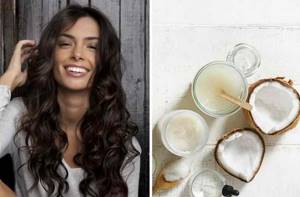
- Before washing your hair, it is better to apply oil to your hair along the entire length . Those with normal scalp (not dry or oily) can apply oil to the roots. Oil should be applied to your hair about 1-2 hours before washing your hair, but you can do it at night if you are going to wash your hair in the morning. The main thing is to place a towel on the pillow so that excess oil does not remain on it.
- After washing your hair, you can apply a very small amount of oil directly to the ends , about a couple of centimeters up. This can be done both with wet hair and with already dried hair.
You won't recognize your hair after coconut oil! They will shine, shine and be easy to comb. Sometimes oil can remove volume, but for those with porous hair this will be a plus. Of course, the most important thing is not to overdo it with the amount of oil. Otherwise, your hair will really shine and shine not the way you would like.
For massage
Any oil is ideal for massages, but coconut oil is superior to many of the other options. It makes the skin very soft and smooth, gives a natural shine and evens out the color and tone of the skin. In addition, the oil eliminates redness and irritation , so if you suffer from this after shaving, coconut oil will solve the problem. How to properly use coconut oil for massage:

- After you shower, pat your skin dry with a towel.
- Apply a small amount of oil to your skin. Start massaging the skin from bottom to top along the lymphatic lines. This can be done either with your hands or with a massage brush.
- Gradually add a small amount of oil to each area of skin you massage. It is better not to apply oil to the entire skin at once, but to do it gradually as you apply it.
- After you apply the oil and massage, you can remove excess oil, if any remains, with a dry cloth.
Facial scrubs
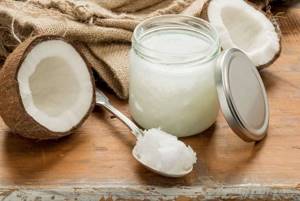
With clay
In combination with cosmetic clay, the product not only has a cleansing effect, but also a soothing, anti-inflammatory, and mattifying effect. The tone of the face is evened out and cell turgor is improved.
The ingredients are mixed in equal parts to make a fairly thick paste, then apply it to the face (bypassing the area around the eyes and lips). The clay tightens the epidermis and forms a dense crust, which can be washed off with water or cleanser after 20 minutes.
With soda
In combination with baking soda, a scrub is formed that has both a chemical and physical effect on the epidermis. The paste is applied in a thin layer; this mixture should not be applied under the eyes or on the lips. It is too aggressive for such sensitive areas.
Using smooth massaging movements, walk along the massage lines, 10-2 times in each direction, then rinse off the scrub with warm water and tone your face.
With coffee
Ground coffee particles mechanically remove dirt and dead epidermal cells. Mix coffee grounds with the product and apply the resulting mixture to your face in all directions. This scrub is especially useful for oily and combination skin types.


